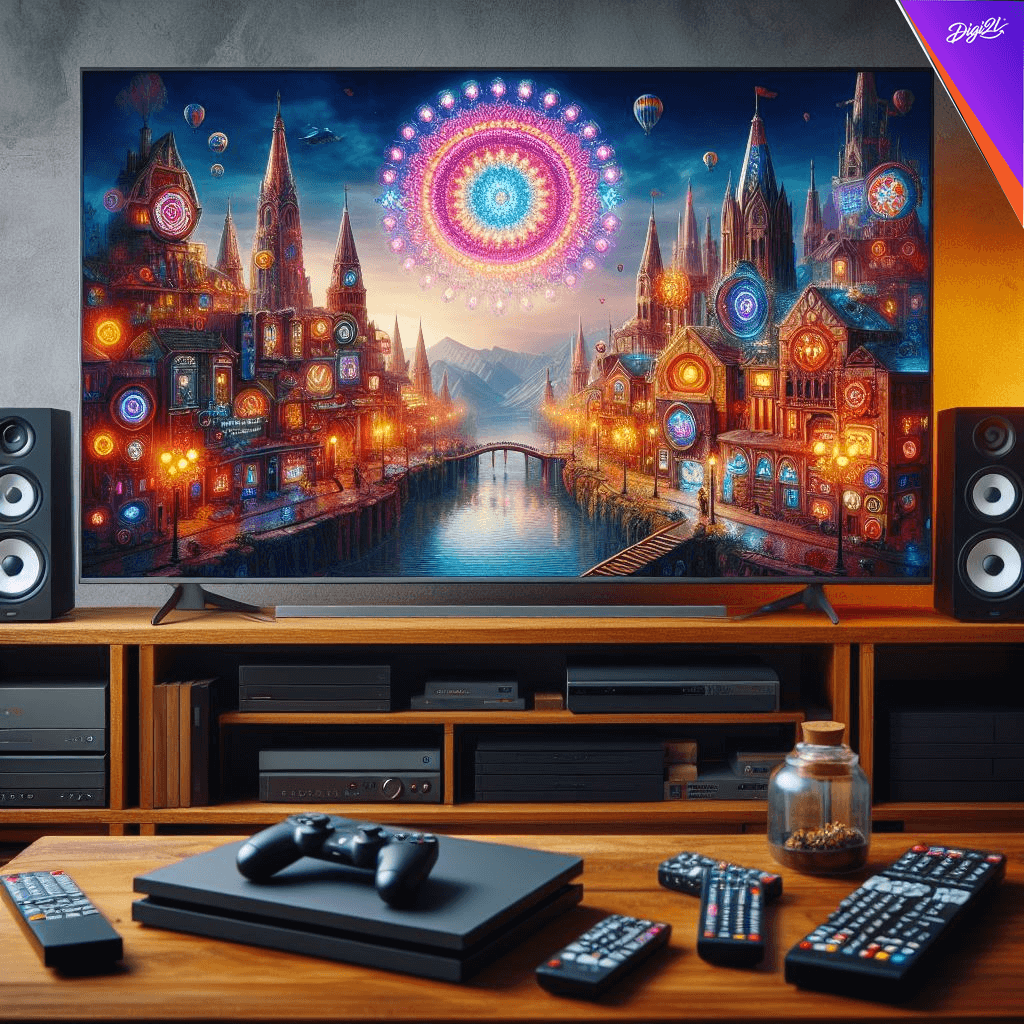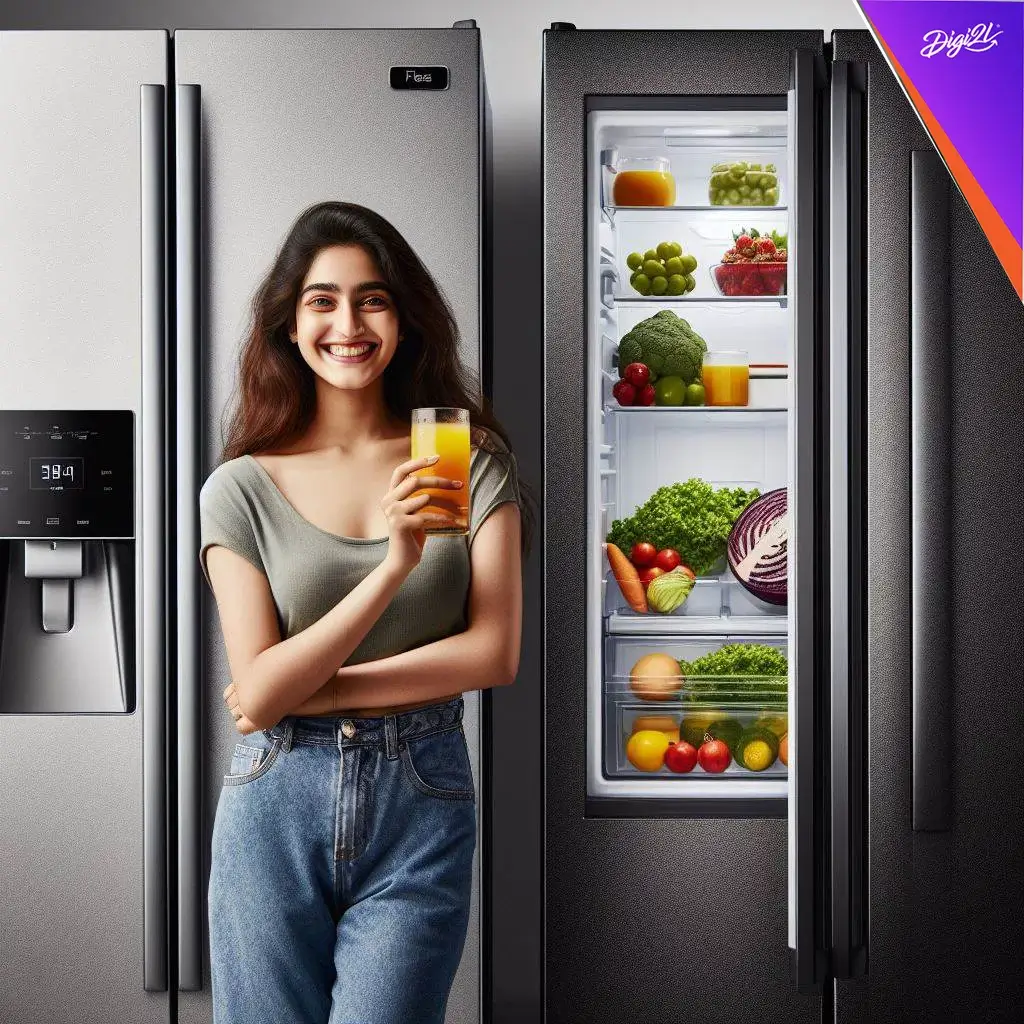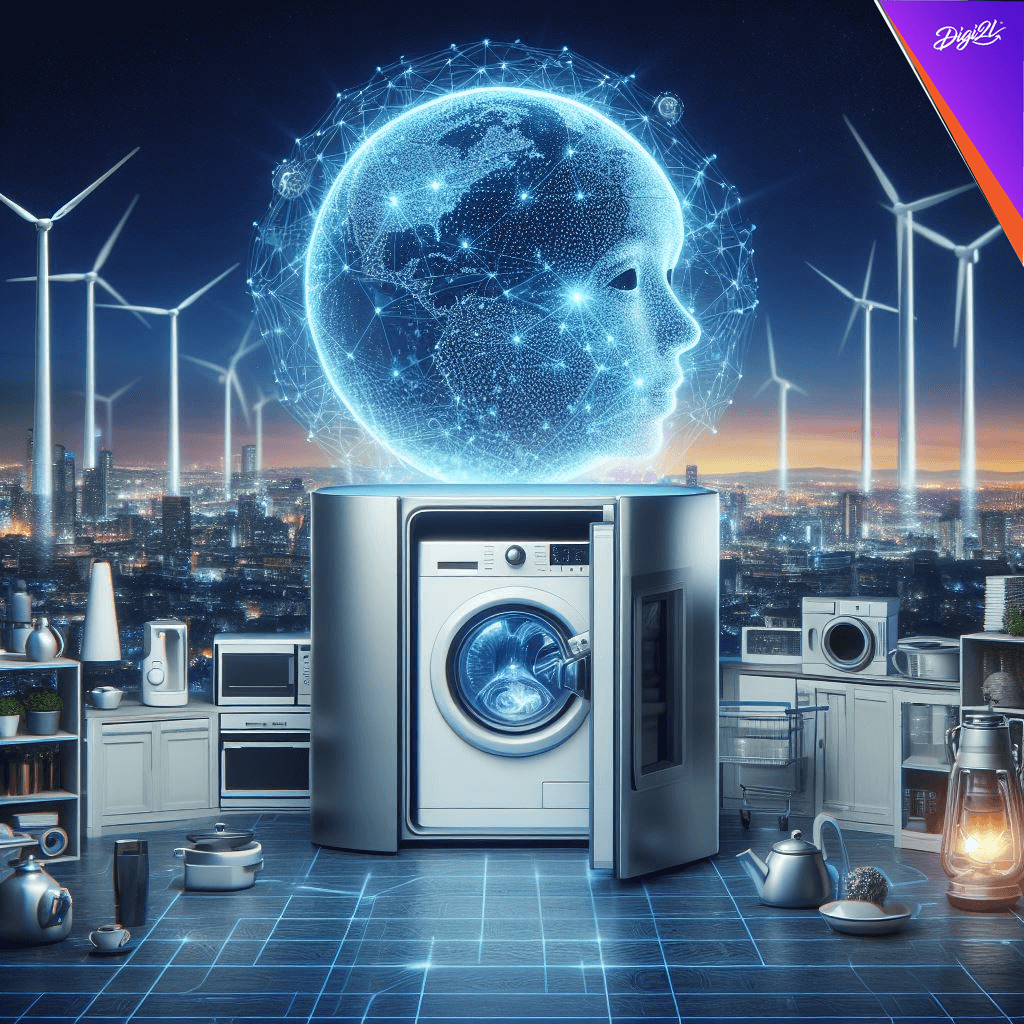LED and SMART televisions are the most in-demand in contemporary times not only because of the highly technologically valuable experience they provide to the viewers but also because of the value and class they add to your interior home décor and style. Many LED TVs come with customizable features such as ambient lighting, allowing you to adjust the color and intensity of the backlighting to match your room’s ambiance. This customization option can enhance the overall atmosphere of your space and create a more immersive viewing experience. Further, the slim designs of LEDs and SMART TVs make them ideal for wall mounting, which can help maximize space and create a more open feel in smaller rooms.
An LED TV, or Light Emitting Diode Television, is a type of television that uses LED backlighting to illuminate the display panel. LED TVs are a popular choice due to their energy efficiency, slim design, and ability to produce vibrant colors and sharp images. Whereas SMART TVs offer built-in internet connectivity and access to a wide range of streaming services, apps, and content. This convenience allows you to easily access your favorite movies, TV shows, music, and online content without the need for additional devices, enhancing your entertainment options and making it easier to stay connected.
Let us now divulge into the best appliances from the second-hand appliances lot, which Digi2l (www.Digi2l.in) has to offer in both these categories and sub categories of these television technologies
LED FULL HD: An LED Full HD TV is a television that combines two main technologies: LED backlighting and Full HD resolution.
LED Backlighting: LED (Light Emitting Diode) backlighting is a method of illuminating the display panel of a TV. LED TVs use an array of LEDs positioned behind the screen to provide the light that creates the images. LED backlighting offers several advantages over traditional CCFL (Cold Cathode Fluorescent Lamp) backlighting, including higher energy efficiency, better color reproduction, and thinner designs.
Full HD Resolution: Full HD refers to a display resolution of 1920 x 1080 pixels. This resolution provides a high level of detail and clarity, making it suitable for watching high-definition content such as Blu-ray movies, HD television shows, and gaming. Full HD resolution is characterized by sharp images and smooth motion, offering an immersive viewing experience.
When combined, LED backlighting and Full HD resolution create an LED Full HD TV, which offers vibrant colors, sharp images, and enhanced contrast levels. LED Full HD TVs are popular choices for consumers who want a high-quality viewing experience without the premium price tag of newer technologies like 4K or OLED. They provide excellent picture quality for a wide range of content, from movies and sports to video games and streaming services.
Now let us understand the technological aspects of
LED HD READY TVs
2)LED HD READY: These are televisions that combine LED backlighting technology with a display resolution that is considered “HD Ready.” Here’s what each term means:
1)LED (Light Emitting Diode) Backlighting: LED backlighting is a method of illuminating the display panel of a TV. LED TVs use an array of LEDs positioned behind the screen to provide the light that creates the images. LED backlighting offers several advantages over traditional CCFL (Cold Cathode Fluorescent Lamp) backlighting, including higher energy efficiency, better color reproduction, and thinner designs.
2)HD Ready Resolution: HD Ready is a term used to describe a television or display device that has a minimum resolution of 1280 x 720 pixels, also known as 720p. This resolution is lower than Full HD (1920 x 1080 pixels) but still provides a high-definition viewing experience. HD Ready resolution is suitable for watching HD content such as broadcast television, streaming services, and some Blu-ray discs.
When combined, LED backlighting and HD Ready resolution create LED HD Ready TVs. These televisions offer the benefits of LED technology, such as energy efficiency and vibrant colors, along with a high-definition viewing experience suitable for a wide range of content. LED HD Ready TVs are often more affordable than Full HD or 4K TVs, making them a popular choice for consumers looking for a budget-friendly option without sacrificing picture quality.
Let us now understand the technological aspects of LED UHD 4K & 8K TVs, which Digi2l offers as second-hand home appliances to its consumers :
LED UHD 4K and 8K TVs are advanced television sets that combine LED backlighting with ultra-high-definition (UHD) resolutions of either 4K or 8K. Here’s what each term means:
1. LED (Light Emitting Diode) Backlighting: LED backlighting is a technology used in modern TVs to illuminate the display panel. LED TVs use an array of LEDs positioned behind the screen to provide the light that creates the images. LED backlighting offers several advantages over traditional CCFL (Cold Cathode Fluorescent Lamp) backlighting, including higher energy efficiency, better color reproduction, and thinner designs.
2. UHD (Ultra High Definition): UHD refers to display resolutions that are significantly higher than standard high-definition (HD) resolutions. There are two main types of UHD resolutions:
•4K UHD: 4K UHD resolution has a pixel count of approximately 3840 x 2160 pixels, which is four times the resolution of Full HD (1920 x 1080 pixels). This higher pixel density results in sharper, more detailed images with greater clarity.
•8K UHD: 8K UHD resolution has a pixel count of approximately 7680 x 4320 pixels, which is four times the resolution of 4K UHD and sixteen times the resolution of Full HD. 8K resolution offers an incredibly high level of detail, making it ideal for very large screens or for viewing content up close.
When combined, LED backlighting and UHD resolution (either 4K or 8K) create LED UHD 4K and 8K TVs, respectively. These televisions offer superior picture quality with incredibly sharp and detailed images, vibrant colors, and high contrast levels. They provide an immersive viewing experience that is especially noticeable when watching native 4K or 8K content, such as movies, TV shows, and streaming services that support these resolutions. LED UHD 4K and 8K TVs are considered top-of-the-line options for consumers who prioritize image quality and want to experience the latest advancements in television technology.
Do you still want more choices?
Let’s explore more and know what Digi2l has to offer in the technological form of OLED – UHD (4K & 8K) :
OLED UHD (Ultra High Definition) TVs are advanced television sets that combine OLED (Organic Light Emitting Diode) display technology with ultra-high-definition resolutions of either 4K or 8K. Here’s a breakdown of each term:
1)OLED (Organic Light Emitting Diode): OLED is a display technology that uses organic compounds that emit light when an electric current is applied. In OLED TVs, each pixel emits its own light independently, allowing for precise control over brightness, contrast, and color. OLED displays offer several advantages over traditional LED/LCD displays, including deeper blacks, higher contrast ratios, wider viewing angles, and faster response times.
UHD (Ultra High Definition): UHD refers to display resolutions that are significantly higher than standard high-definition (HD) resolutions. There are two main types of UHD resolutions:
•4K UHD: 4K UHD resolution has a pixel count of approximately 3840 x 2160 pixels, which is four times the resolution of Full HD (1920 x 1080 pixels). This higher pixel density results in sharper, more detailed images with greater clarity.
•8K UHD: 8K UHD resolution has a pixel count of approximately 7680 x 4320 pixels, which is four times the resolution of 4K UHD and sixteen times the resolution of Full HD. 8K resolution offers an incredibly high level of detail, making it ideal for very large screens or for viewing content up close.
When combined, OLED technology and UHD resolution (either 4K or 8K) create OLED UHD 4K and 8K TVs, respectively. These televisions offer superior picture quality with incredibly sharp and detailed images, vibrant colors, deep blacks, and high contrast levels. OLED UHD TVs are considered top-of-the-line options for consumers who prioritize image quality and want to experience the latest advancements in television technology. They are especially well-suited for applications where image quality is critical, such as home theater setups, professional video editing, and gaming.
Now let us understand QLED-UHD(4K & 8K) televisions and what they have to offer Digi2l’s consumers :
QLED UHD (Ultra High Definition) TVs are advanced television sets that combine QLED (Quantum Dot Light Emitting Diode) display technology with ultra-high-definition resolutions of either 4K or 8K. Here’s a breakdown of each term:
1. QLED (Quantum Dot Light Emitting Diode): QLED is a display technology that uses quantum dots, which are semiconductor nanocrystals, to enhance the performance of LED/LCDs. In QLED TVs, quantum dots are placed in a film layer between the LED backlight and the display panel. When illuminated by the LED backlight, quantum dots emit light of specific colors depending on their size, providing enhanced color accuracy, brightness, and efficiency compared to traditional LED/LCDs. QLED technology also allows for improved HDR (High Dynamic Range) performance and wider color gamuts.
2. UHD (Ultra High Definition): UHD refers to display resolutions that are significantly higher than standard high-definition (HD) resolutions. There are two main types of UHD resolutions:
•4K UHD: 4K UHD resolution has a pixel count of approximately 3840 x 2160 pixels, which is four times the resolution of Full HD (1920 x 1080 pixels). This higher pixel density results in sharper, more detailed images with greater clarity.
•8K UHD: 8K UHD resolution has a pixel count of approximately 7680 x 4320 pixels, which is four times the resolution of 4K UHD and sixteen times the resolution of Full HD. 8K resolution offers an incredibly high level of detail, making it ideal for very large screens or for viewing content up close.
When combined, QLED technology and UHD resolution (either 4K or 8K) create QLED UHD 4K and 8K TVs, respectively. These televisions offer superior picture quality with vibrant colors, high brightness levels, excellent contrast, and enhanced HDR performance. QLED UHD TVs are considered top-of-the-line options for consumers who prioritize image quality and want to experience the latest advancements in television technology. They are well-suited for a wide range of applications, including home theater setups, gaming, and professional content creation.
Now that Digi2l’s audience is well introduced to the diverse technological aspects of all LED TV variants, let us introduce you to the difference of SMART TVs :
The main difference between LED TVs and smart TVs lies in their capabilities and functionality:
1. LED TVs (Light Emitting Diode TVs):
•LED TVs are defined by their backlighting technology, which uses arrays of LEDs to illuminate the display panel.
•LED TVs offer excellent picture quality, energy efficiency, and slim designs.
•These TVs typically do not have built-in internet connectivity or advanced features beyond displaying content from external sources like cable boxes, Blu-ray players, or gaming consoles.
•LED TVs are primarily focused on providing high-quality visuals but may lack additional functionality found in smart TVs.
2. Smart TVs:
•Smart TVs are equipped with internet connectivity and built-in software platforms that allow users to access a variety of online content and services directly on the TV without the need for external devices.
•Smart TVs can stream content from popular streaming services like Netflix, Hulu, Amazon Prime Video, and YouTube, as well as access social media platforms, web browsers, and various apps.
•These TVs often come with features such as voice control, screen mirroring, built-in web browsers, and app stores, allowing users to customize their viewing experience and access a wide range of entertainment options.
•Smart TVs may use various display technologies, including LED, OLED, QLED, or others, but what distinguishes them is their internet connectivity and software platform.
To conclude, while LED TVs focus primarily on providing high-quality visuals through LED backlighting technology, smart TVs offer additional features and functionality by integrating internet connectivity and smart software platforms, allowing users to access online content and services directly on the TV. Some TVs combine both LED technology and smart features, offering the benefits of both.
We believe that now our audience is in a better position to make their choices for their purchase in the television category and subcategories and Digi2l offers the best second-hand appliances, at more affordable rates, to satisfy all your requirements. Happy shopping!!














